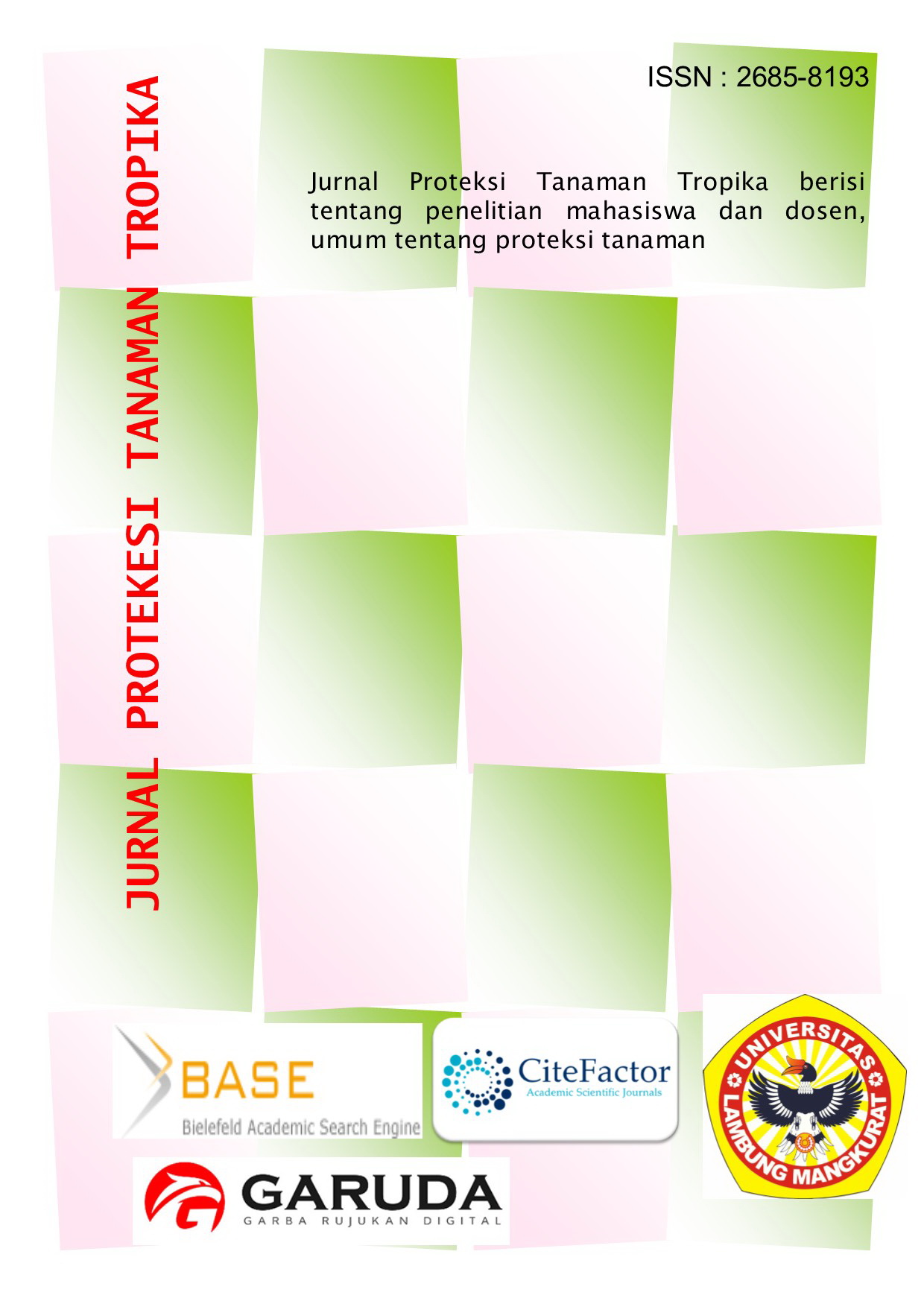The Potential of Botanical Insecticides for the Control of Callosobruchus chinensis L.
Abstract
Callosobruchus chinensis L. (Coleoptera: Bruchidae) is a major storage pest of legumes that reduces seed quality, germination capacity, and causes yield losses of up to 30–50% during storage. Control strategies have generally relied on synthetic chemical insecticides, which may lead to resistance, hazardous residues, and adverse impacts on health and the environment. Therefore, botanical insecticides are considered a safer and more sustainable alternative. This review article was prepared through a systematic literature study by searching scientific publications from Google Scholar and Google Books using the keywords “botanical insecticide,” “plant extract,” “essential oil,” “pulse beetle,” and Callosobruchus chinensis. The findings indicate that several plants such as Neem (Azadirachta indica), Black Pepper (Piper nigrum), Custard Apple (Annona squamosa), Sweet Flag (Acorus calamus), Tuba Root (Derris elliptica), and Mexican Sunflower (Tithonia diversifolia) show great potential as botanical insecticides. Their active compounds, including azadirachtin, piperine, annonacin, β-asarone, rotenone, as well as alkaloids and flavonoids, act through multiple mechanisms, such as contact poison, stomach poison, antifeedant, repellent, and sterilant agents, effectively suppressing pest populations. The advantages of botanical insecticides include biodegradability, environmental safety, and the availability of abundant local resources, although limitations remain in terms of residual activity and consistency of effectiveness. Thus, botanical insecticides have the potential to be developed as an important component of environmentally friendly and sustainable Integrated Pest Management (IPM) strategies to protect stored commodities from losses caused by storage pests.






